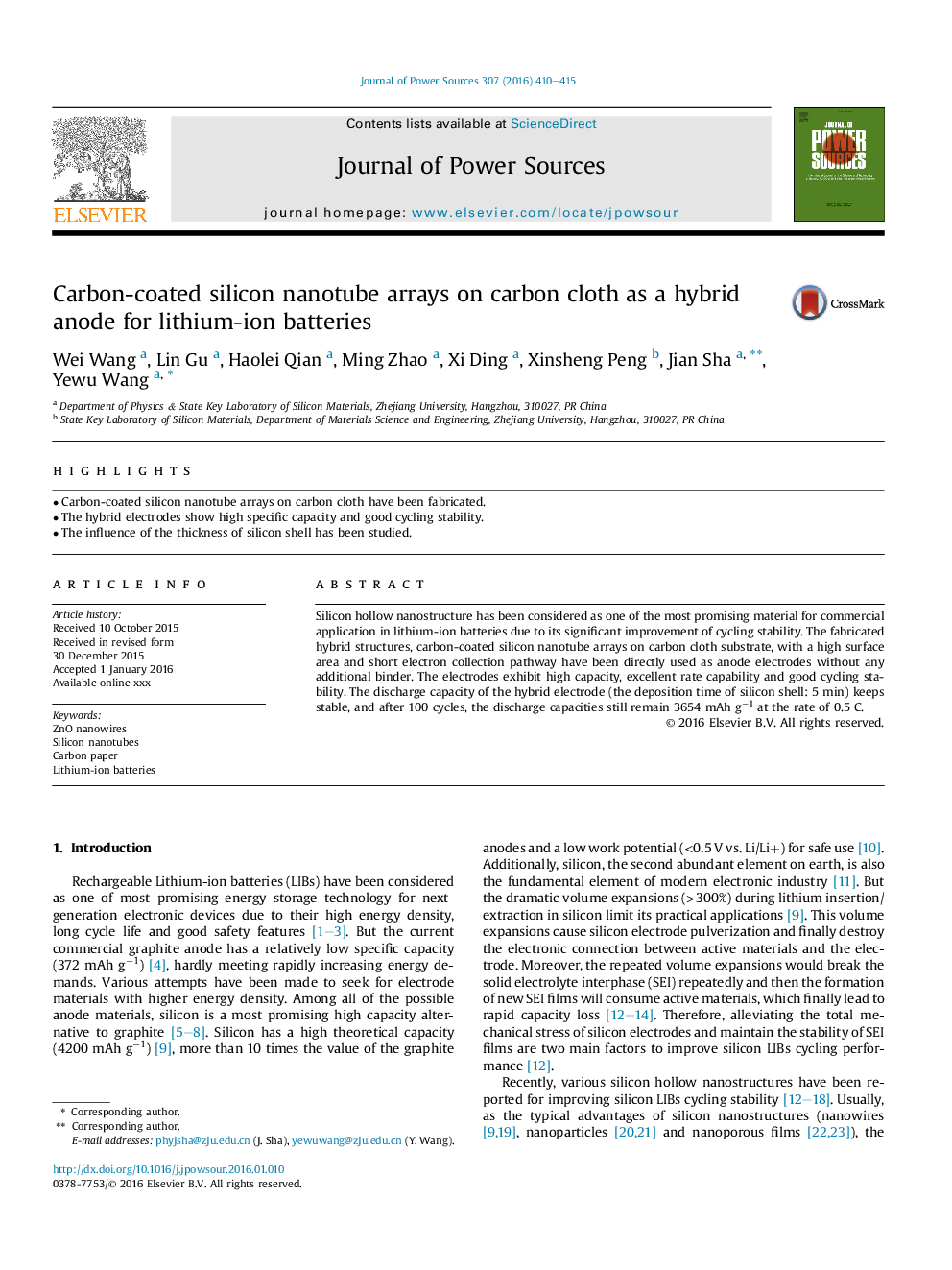| Article ID | Journal | Published Year | Pages | File Type |
|---|---|---|---|---|
| 7729257 | Journal of Power Sources | 2016 | 6 Pages |
Abstract
Silicon hollow nanostructure has been considered as one of the most promising material for commercial application in lithium-ion batteries due to its significant improvement of cycling stability. The fabricated hybrid structures, carbon-coated silicon nanotube arrays on carbon cloth substrate, with a high surface area and short electron collection pathway have been directly used as anode electrodes without any additional binder. The electrodes exhibit high capacity, excellent rate capability and good cycling stability. The discharge capacity of the hybrid electrode (the deposition time of silicon shell: 5 min) keeps stable, and after 100 cycles, the discharge capacities still remain 3654 mAh gâ1 at the rate of 0.5 C.
Related Topics
Physical Sciences and Engineering
Chemistry
Electrochemistry
Authors
Wei Wang, Lin Gu, Haolei Qian, Ming Zhao, Xi Ding, Xinsheng Peng, Jian Sha, Yewu Wang,
